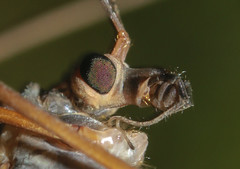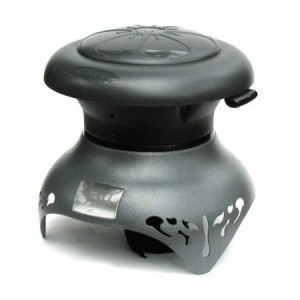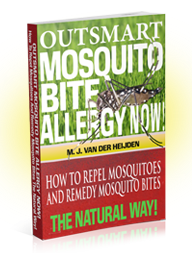Giant Gallinipper Mosquito Invades Florida
Giant mosquitoes, twenty times larger than normal and about the size of a quarter, are reported to invade Florida this summer. While these insects are common especially in the lake areas of central Florida, the mega mosquitoes that scientists say will invade this summer are nothing like they have seen before.
Many horror movies have played with the idea of giant mosquitoes invading towns and destroying everything on its path. This time, however, real research shows that these enormous mosquitoes could be invading Florida in the next couple of months.
These mosquitoes, known as American Gallinippers, look scary and they have the bite to boot. [pullquote]According to Florida researchers, gallinippers are like other mosquitoes whereby only the females are blood feeders. [/pullquote]The males, on the other hand, survive by sucking flower nectars. Research also shows that this mosquito species are highly aggressive and that their bite can be quite painful.
According to residents who have been bitten, these insects bite like they are stabbing their host. They become highly aggressive especially when their habitat is disturbed or invaded. Since they are extremely large, they can bite through clothing and cause more discomfort.

Gallinippers, crane fly hanging from my ceiling MACRO it don\’t p…—quapan (Flickr.com)
Why Invade Florida this Summer?
This invasion is reportedly due to the abundant rains in the past few months. The hurricane season in the Atlantic also helps intensify the reproduction of these mega mosquitoes. Back in 2004, the increase in the population of gallinippers is associated to the hurricane in Florida. In 2012, a large population of gallinippers were linked to the tropical storm in the area.
This year, researchers expect an increase in the number of gallinippers all over the state. Published studies regarding this matter warn of the possibility that a cloud of mosquitoes will cover large areas particularly the Northern part of the Everglades. Known in South Florida as a huge subtropical swamp ecosystem, Everglades has become a focus for researchers for this possible invasion.

Gallinipper mosquito, Crane Fly Female—Lennart Tange (Flickr.com)
Gallinippers are also known as floodwater mosquitoes. Experts say that the summer invasion is mostly due to last June’s tropical storm Debby which has caused enormous flooding in most areas in Florida. Mosquito eggs laid during this period are expected to hatch at the arrival of heavy rains this summer.
Phil Kaufman, entomologist from the University of Florida reported that the events that occurred last June will greatly influence the large number of mosquitoes that are expected to invade Florida. This prediction is also based on the number of Gallinippers last year.
Growth and Development
According to studies, the mosquito larvae develop in plants that float in the water. This particular species of mosquitoes are omnivores so they feed on other mosquito larvae and tadpoles. These larvae feed voraciously so that they mature in just six days.
Scientists are extremely focused on learning more about these insects since it is likely to cause a plague if not given enough attention. However, the larvae’s insatiable appetite for the larvae of other mosquito species makes them a likely candidate for biological pest control. However, the adult gallinipper’s predatory nature and painful bite make this impractical.
Health Risks and Control
A document from the Brunswick County notes that these mosquitoes usually appear in large numbers especially after the hurricane season. They are commonly found in the south eastern parts of the United States, but they are also found in the North as far as Quebec and Ontario.

Gallinipper mosquito, Close up of Crane Fly—Lennart Tange (Flickr.com)
American Gallinippers are positive to have different strains of encephalitis and west Nile disease. The good news though is that the CDC has confirmed that these mosquitoes are not vectors in the transmissions of both the west Nile disease and encephalitis. In other words, the greatest risk it can cause is that its bite can be painful. They may be a great nuisance but they do not carry major health hazard.
Researchers suggest homeowners to make sure they get rid of stagnant water in their area. Female gallinippers lay their eggs in moist places where the larvae develop quickly. Although these mosquitoes commonly breed in ponds and puddles, it will help if homeowners help minimize the breeding grounds of these insects. Like Asian tiger mosquitoes, gallinipper’s eggs can remain dormant for years in dry areas. They become active with water so that they multiply best during rainy seasons.
According to experts, the best way to combat these insects is by using bug repellents with DEET. Aside from getting rid of stagnant water, other preventive measures to avoid the painful sting caused by these mosquitoes are to wear long sleeved shirts and long pants.
For the local residents of Florida, there is no need to panic since local government officials are taking the right measures to ensure the population of these insects is reduced. However, standard practices for mosquito control should be practiced especially in areas where government help is not accessible.
Filed under: Mosquito Control
Like this post? Subscribe to my RSS feed and get loads more!




Leave a Reply
You must be logged in to post a comment.